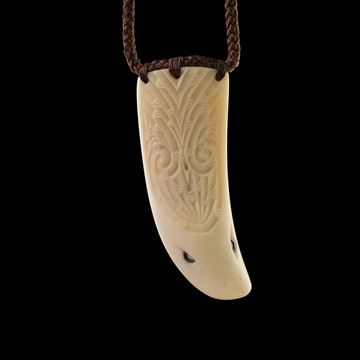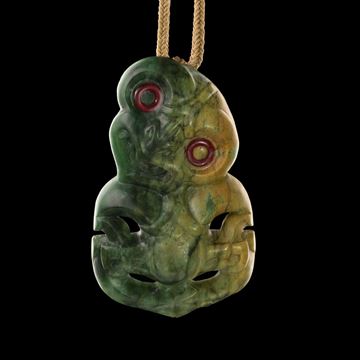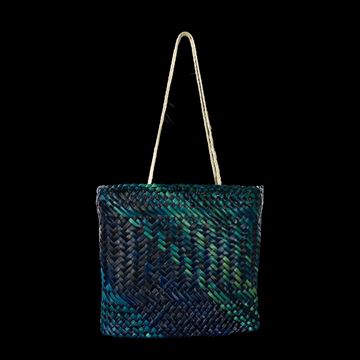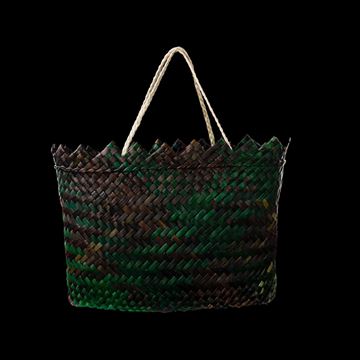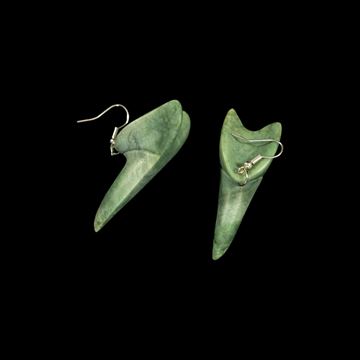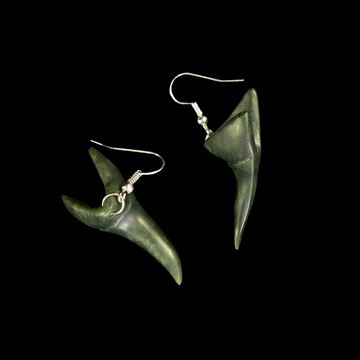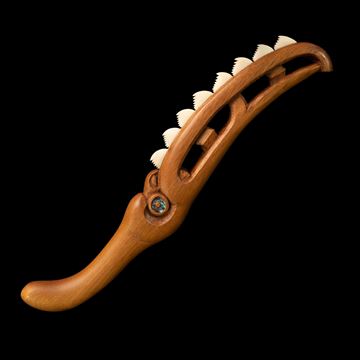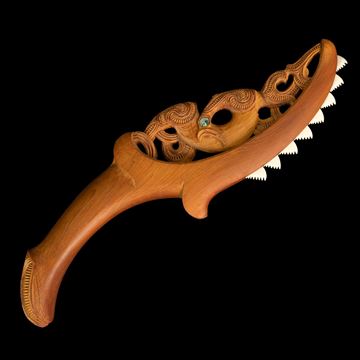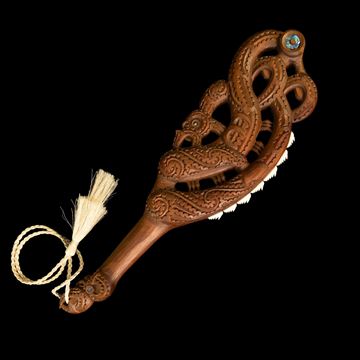
Āhua Gallery
Select Subcategory
Pōria Kākā - 5495MA
Pōria Kākā are leg rings crafted from bone or stone used to keep pet kākā (parrots) from flying away. The giant kaka parrot was used by the Māori to assist them during hunting. The bird was used as a decoy to capture other kaka parrots.
As with many Māori items the kaka ring was both used as a tool as well as an adornment.
Material: Pounamu (Kawakawa)
Measurements: 32mm x 24mm x 4mm
$450.00
Rei Puta - 5598HW
The mark of a high Chief was one who wore the Rei Puta (whale tooth pendant), as the teeth of the Sperm Whale were highly prized because of their rarity. With actual whale teeth being such a rarity, it became common to fashion the tooth form from other materials.
Material: Koiwi (Beef Bone)
Measurements: 85mm x 35mm x 16mm
$690.00
Hei Tiki - 6820HW
Hei tiki are the best known of all Māori adornments. Tiki are symbols of fertility that depict a new-born child. They are often family heirlooms bearing personal names and embodying their wearers lineage. As with most Māori personal adornments, hei tiki are often passed down generationally.
Material: Pounamu (PutiPuti)
Measurements: 95mm x 60mm x 16mm
$2,350.00
Pekapeka - 6313TO
The Pekapeka (native NZ bat) represents the interwoven nature of the spirit world and the world of the living – the seen and the unseen. The bat was interpreted by Māori as a creature who symbolically acted as an interface between the two worlds and whose physiology (which does not possess the gift of sight) appeared to be guided by the ethereal and the metaphysical.
Material: Beef Bone (Koiwi)
Measurements: 62mm x 33mm x 7mm
$590.00
Kete Whakairo - 6798AY
Kete whakairo are woven flax bags of a finer quality than the general utilitarian kete. They are normally made from prepared strips of flax and/or kiekie, some of which have been dyed. Kete whakairo may also feature geometric designs.
Material: Harakeke & Muka
Measurements: 320mm x 170mm
$650.00
Kete Whakairo - 5824RW
Kete whakairo are woven flax bags of a finer quality than the general utilitarian kete. They are normally made from prepared strips of flax and/or kiekie, some of which have been dyed. Kete whakairo may also feature geometric designs.
Material: Harakeke
Measurements: 220mm x 230mm
$590.00
Kete Whakairo - 5826RW
Kete whakairo are woven flax bags of a finer quality than the general utilitarian kete. They are normally made from prepared strips of flax and/or kiekie, some of which have been dyed. Kete whakairo may also feature geometric designs.
Material: Harakeke
Measurements: 260mm x 210mm
$540.00
Mako Earrings - 5624KC
Shark teeth were highly sought after to wear as a symbol of prestige for personal adornment. They were reflective of the mana of the shark itself. These earrings are in reference to the Mako shark. Material: Pounamu (Tokaatea Pounamu)
Measurements: 54mm x 22mm
$490.00
Mako Earrings - 5621KC
Shark teeth were highly sought after to wear as a symbol of prestige for personal adornment. They were reflective of the mana of the shark itself. These earrings are in reference to the Mako shark. Material: Pounamu (Kawakawa)
Measurements: 45mm x 21mm
$490.00
Māripi - CI3233
Māripi are a traditional meat cutting tool. They are fashioned with a wooden handle and sharks’ teeth carved from Kōiwi (beef bone) to create a serrated edge.
Material: Rātā, Kōiwi (Beef Bone) & Pāua (Abalone)
Measurements: 370mm x 60mm x 30mm
$3,500.00
Māripi - CI2895
Māripi are a traditional meat cutting tool. They are fashioned with a wooden handle and sharks’ teeth carved from Kōiwi (beef bone) to create a serrated edge.
Material: Rātā, Kōiwi (Beef Bone) & Pāua (Abalone)
Measurements: 340mm x 100mm x 30mm
$4,200.00
Māripi - CI2201
Māripi are traditional meat-cutting tools, expertly crafted with a wooden handle and a serrated edge formed from the teeth of a Tuatini or seven-gilled shark. These teeth are carefully shaped and attached to the handle to enhance the tool's cutting effectiveness.
Material: Tōtara, Tuatini Niho (Seven-Gilled Shark Teeth) & Pāua (Abalone)
Measurements: 405mm x 125mm x 40mm
$4,500.00


